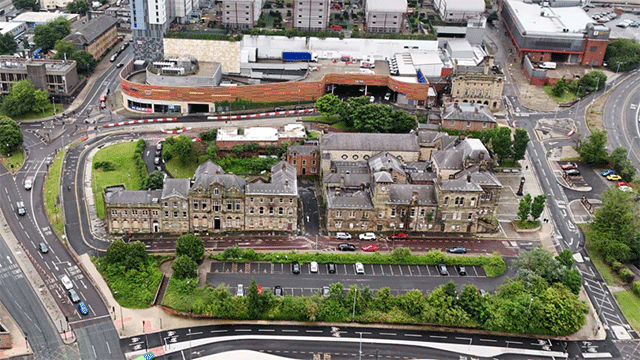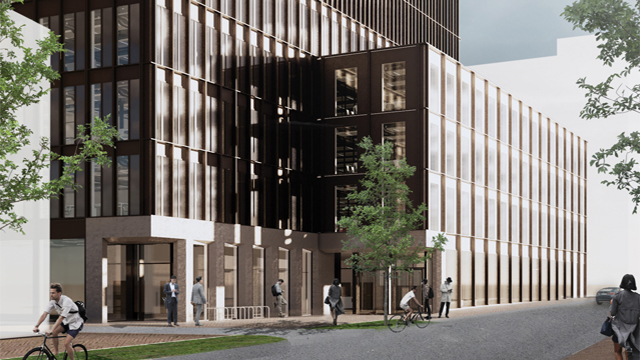In her latest speech to go viral, climate change activist Greta Thunberg castigated political leaders for failing to deliver on “empty promises”.
“Build back better. Blah, blah blah. Green economy. Blah, blah, blah. Net zero by 2050. Blah, blah, blah,” she said at the Youth4Climate event in Milan at the end of September.
Panellists at an EG webinar to discuss the role of cities in cutting UK carbon emissions were more circumspect but shared some of her frustration. There was a clear consensus that more detailed policy initiatives and incentives are urgently needed from government – most notably to drive the decarbonisation of existing buildings in our urban centres.
As John Palmer, partner at law firm Shoosmiths, put it: “We’ve had probably a couple of pieces of legislation with EPCs in 2007 and the Energy Act in 2011, and then the next was the obligation to decarbonise by 2050, with nothing in between.”

Cities centre stage
Valentine Quinio, an analyst with think tank Centre for Cities, kicked off the session with a reminder of why UK cities have such a crucial role to play in delivering on that 2050 obligation.
They account for close to half of the UK’s CO2 emissions, with transport and the built environment – particularly housing – standing out as key areas where progress towards zero carbon emissions has been limited.
But cities also account for much more than half of the UK population and offer huge potential for making that progress towards net zero because of their density. “It is in cities that carbon emissions are at their lowest per capita and that is because of the role of the built environment,” said Quinio.
“In a dense, urban environment it is much easier to leave the car behind because journeys are shorter and density bolsters demand for public transport and makes it much more viable. On the housing front, dense urban housing in the form of flats and terraces is much more energy efficient than typical suburban detached houses.”
But strong policy and leadership is vital to harnessing the potential to drive down emissions from these key areas, she stressed.
Business case
Dan Jestico, a sustainable design director at Savills, said that tackling carbon emissions from existing buildings in our cities must be a priority. Policies, frameworks and mayoral guidance were reducing the impact of new buildings, but the same could not be said for existing stock.
“Existing buildings are the cause of the UK’s carbon emissions from the built environment… We’ve got the oldest building stock in Europe. It’s leaky, it’s not well insulated,” he said.
Jestico is working with clients which, having declared a climate emergency, are now putting together a detailed programme to deliver net-zero emissions across their assets by 2030.
“If a building is not decarbonised, it risks becoming a stranded asset in 10-15 years’ time. No one wants to occupy it, no one wants to buy it,” he said. “But you don’t have to do everything tomorrow.”
The focus is on staged interventions and refurbishment at different points in each building’s life cycle, allowing landlords to plan for the capital expenditure and keep buildings operational.
Those hoping to simply “bolt a load of PV on to the roof” will be disappointed. “What’s needed is a targeted range of interventions, looking at the building fabric to minimise energy demand. It’s not as sexy as PV panels, but it’s a lot more effective,” he said. “We look at how to replace plant to get rid of fossil fuels – replacing gas boilers with electric solutions that are ready for the decarbonised electricity grid.”
The good news is that a lot of clients are “progressive”. “They are the investors of our pensions. They are investing for the long term and what that translates to is making sure that buildings retain their value and remain useful for as long as possible by being 2050 ready,” he said.
Taxation system
While the business case for decarbonising existing buildings is clear, Shoosmiths’ Palmer pointed out that the UK taxation system “doesn’t encourage net zero – particularly in the case of existing commercial buildings”.
VAT incentives apply to residential and charitable buildings, but do not extend to commercial buildings, for example. “Even capital allowance incentives [for commercial buildings] do not distinguish between carbon-intensive improvements or energy-saving improvements,” he said.
“It is something which really needs to be looked at to incentivise energy efficiency in the existing buildings stock. It is difficult, so there is a need for incentives to encourage people to make buildings 2050-compliant and that needs to happen pretty quickly,” he said.
Old vs new
Given the many challenges associated with reducing the impact of existing buildings, opportunities to create brand new developments that can use new technology to operate on a net-zero basis seem all the more attractive.
However, Olivia O’Brien, a senior climate consultant with Longevity Partners, stressed the need for clients to fully weigh up the environmental costs and benefits of retrofitting existing commercial buildings versus demolition and new development.
“If you do go for the last resort of demolition, it’s important to look not only at the operational impact of the new building but also at things like the disposal of materials during demolition,” she said. Materials from concrete to ceiling tiles could be recycled, she said, and new materials should be sourced locally or transported to site using electric vehicles.
In the capital, she said the mayor’s London Plan was bringing an important focus to whole life-cycle carbon emissions. “Regulations, particularly within cities, definitely help to drive change,” she said.
Integrating transport
Moving on to transport, Centre for Cities’ Quinio also held up London as a sound model to follow. She highlighted the ability of the London mayor to integrate transport and planning powers within a single planning document – and said other UK cities would benefit hugely from a similar arrangement.
“I think that’s key in helping London transition to net zero. It allows the mayor to build transport where it is needed and ensure that housing is built closer to the existing public transport network. That’s really the key to helping people switch away from carbon-intensive modes of transport,” she said.
Jestico added that discussions about transport and new development increasingly started with the idea that “if you have to use a car, you’ve failed” and work backwards from that point to reduce private car use as much as possible.
To send feedback, e-mail julia.cahill@eg.co.uk or tweet @EGJuliaC or @EGPropertyNews
In partnership with


Image © Mehrunissa/Pixabay











